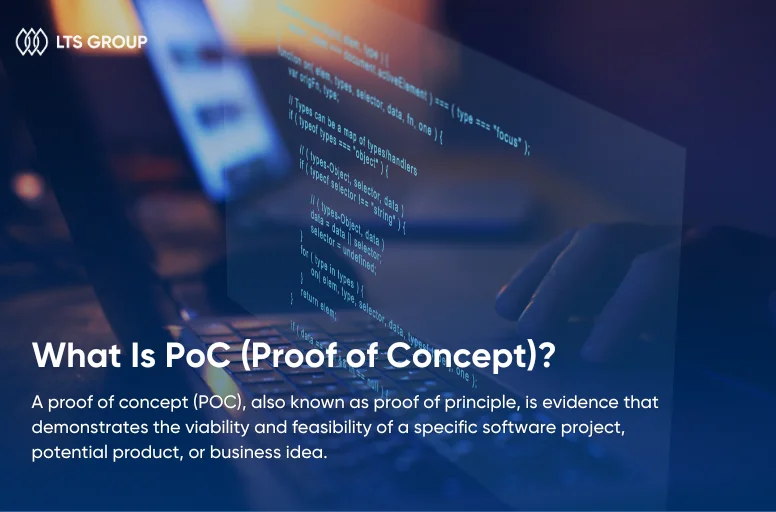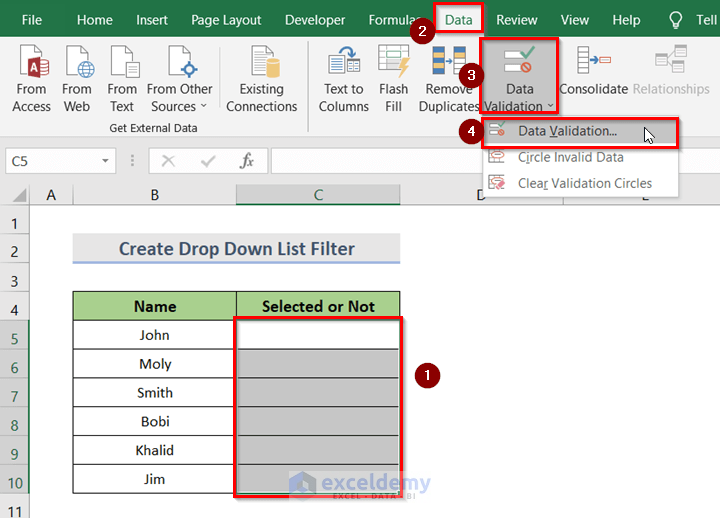Unveiling Proof of Concept: 5 Essential Tips

The Proof of Concept (PoC) is a powerful tool in the innovation and technology space, offering a tangible demonstration of an idea's viability and potential. It serves as a critical step in the product development lifecycle, bridging the gap between concept and reality. This article aims to guide you through the process of creating a compelling PoC, backed by real-world insights and examples.
Understanding the Purpose of a Proof of Concept

A Proof of Concept is more than just a prototype; it is a strategic tool that validates the technical feasibility and potential impact of an idea. It provides a tangible demonstration, often in the form of a working model, that showcases the core functionalities and benefits of a proposed solution. The PoC process is an iterative journey, allowing for experimentation, refinement, and the gathering of valuable insights to inform future development and decision-making.
In the competitive landscape of technology and innovation, a well-executed PoC can be a game-changer. It not only validates the technical aspects but also helps identify potential risks, refine the value proposition, and gain early buy-in from stakeholders. By investing in a robust PoC, businesses can make informed decisions, allocate resources effectively, and mitigate the risks associated with bringing a new product or service to market.
Tip 1: Define Clear Objectives and Scope

Before embarking on your PoC journey, it is crucial to establish clear objectives and define the scope of your project. This step lays the foundation for a successful PoC and ensures that your efforts are focused and aligned with your goals.
Start by identifying the specific problem or opportunity that your PoC aims to address. Clearly articulate the value proposition and the expected impact of your solution. Consider the following questions to guide your objective-setting process:
- What specific challenge or pain point are you aiming to solve with your PoC?
- How will your proposed solution add value or bring about positive change?
- What are the key performance indicators or success metrics for your PoC?
- Are there any potential risks or limitations that you need to address?
By defining clear objectives, you can ensure that your PoC remains focused and avoids scope creep. This clarity will guide your team's efforts, help prioritize features, and provide a framework for evaluating the success of your PoC.
Example: Smart Home Automation
Let’s consider a smart home automation PoC aimed at enhancing energy efficiency. The objective could be to develop a prototype that demonstrates how smart sensors and automated systems can optimize energy consumption in residential spaces. The scope would involve selecting specific rooms or areas of a home to automate, defining the desired energy-saving outcomes, and determining the key features and functionalities of the system.
Tip 2: Gather Comprehensive Requirements
A successful PoC relies on a deep understanding of the requirements and constraints of the proposed solution. This step involves extensive research, stakeholder engagement, and a thorough analysis of the problem space.
Start by conducting a comprehensive literature review and market analysis to understand existing solutions, trends, and best practices. Engage with potential users, customers, and industry experts to gather insights and feedback. Identify the specific needs, preferences, and pain points of your target audience. Consider the following aspects when gathering requirements:
- Functional Requirements: Define the core functionalities and features that your PoC must demonstrate.
- Non-Functional Requirements: Consider aspects like performance, scalability, security, and usability.
- Constraints: Identify any technical, legal, or financial constraints that may impact your PoC.
- User Stories: Create user stories to capture the desired user experience and outcomes.
By gathering comprehensive requirements, you can ensure that your PoC addresses the real needs of your target audience and aligns with industry standards and best practices.
Example: Sustainable Transportation
In the context of a PoC for sustainable transportation solutions, the requirements gathering phase would involve researching existing eco-friendly transportation options, analyzing user preferences and behaviors, and identifying key pain points in the current transportation ecosystem. This could include understanding the need for efficient public transport systems, integrating renewable energy sources, and optimizing traffic management to reduce emissions.
Tip 3: Choose the Right Technology Stack
The technology stack you choose for your PoC plays a critical role in its success. It should be aligned with your objectives, requirements, and the desired outcome of your PoC.
Evaluate the available technologies and tools that best suit your needs. Consider factors such as ease of development, scalability, interoperability, and cost. Here are some key considerations when selecting your technology stack:
- Programming Languages: Choose languages that are well-suited for your PoC's requirements and have a strong developer community for support.
- Frameworks and Libraries: Select frameworks and libraries that provide the necessary functionalities and accelerate development.
- Cloud Services: Evaluate cloud platforms that offer the required infrastructure and services for your PoC.
- Data Management: Determine the appropriate data storage and management solutions based on your data needs.
- Security Considerations: Implement security measures to protect your PoC and user data, especially if it involves sensitive information.
By choosing the right technology stack, you can ensure that your PoC is technically sound, scalable, and aligns with industry standards.
Example: Smart Agriculture
For a PoC in the field of smart agriculture, the technology stack could include IoT devices for data collection, cloud-based platforms for data storage and processing, and machine learning algorithms for analyzing agricultural data. This combination of technologies would enable the PoC to demonstrate the potential of precision agriculture techniques, such as real-time crop monitoring and predictive analytics.
Tip 4: Iterate and Refine Continuously

The PoC process is inherently iterative, and embracing this mindset is crucial for success. It allows you to learn, adapt, and refine your solution based on feedback and insights gathered during development.
Establish a feedback loop with your stakeholders and end-users. Conduct regular demonstrations and gather feedback to identify areas for improvement. Use this feedback to refine your PoC and enhance its value proposition. Consider the following strategies for continuous iteration:
- User Testing: Conduct user tests to gather feedback on usability, functionality, and overall user experience.
- A/B Testing: Implement A/B testing to compare different versions of your PoC and gather data-driven insights.
- Rapid Prototyping: Embrace rapid prototyping techniques to quickly test and validate ideas.
- Continuous Integration and Deployment (CI/CD): Utilize CI/CD pipelines to automate testing and deployment, ensuring a seamless development process.
By iterating and refining your PoC continuously, you can ensure that it evolves into a robust and market-ready solution.
Example: Personalized Medicine
In the realm of personalized medicine, the PoC could involve developing a prototype that demonstrates the potential of precision genomics. Through continuous iteration, the PoC can be refined to incorporate advancements in DNA sequencing technologies, machine learning algorithms for data analysis, and feedback from healthcare professionals and patients. This iterative process ensures that the PoC remains at the forefront of medical innovation and addresses the evolving needs of the industry.
Tip 5: Showcase the Impact and Value
A compelling PoC should not only demonstrate the technical feasibility of an idea but also showcase its potential impact and value. It is essential to communicate the benefits and outcomes of your PoC effectively to gain buy-in and support from stakeholders.
Develop a compelling narrative around your PoC, highlighting its unique value proposition. Use data, visualizations, and real-world examples to illustrate the impact of your solution. Consider the following strategies to showcase the impact and value of your PoC:
- Data-Driven Insights: Present data and analytics that demonstrate the effectiveness and impact of your PoC.
- Use Cases and Success Stories: Share real-world use cases and success stories to illustrate the practical application of your solution.
- Demonstrations and Prototypes: Create interactive demonstrations or prototypes that allow stakeholders to experience the PoC firsthand.
- Customer Testimonials: Gather feedback and testimonials from early adopters or pilot users to validate the value of your PoC.
By showcasing the impact and value of your PoC, you can build momentum, gain support, and pave the way for further development and commercialization.
Example: Renewable Energy Integration
For a PoC focused on integrating renewable energy sources into the grid, the impact and value can be showcased through data-driven insights. Presenting real-time data on energy generation, consumption, and grid stability can demonstrate the effectiveness of the PoC. Additionally, sharing success stories from early adopters, such as reduced carbon emissions and cost savings, can further emphasize the value of the solution.
Conclusion
A well-executed Proof of Concept is a powerful tool for validating ideas, gaining buy-in, and driving innovation. By following these essential tips and embracing an iterative mindset, you can create a compelling PoC that showcases the potential of your vision. Remember, a PoC is not just about technology; it is about telling a compelling story and demonstrating the impact of your solution.
What are the key benefits of a Proof of Concept?
+
A PoC offers several benefits, including validating the technical feasibility of an idea, identifying potential risks, refining the value proposition, and gaining early buy-in from stakeholders. It provides a tangible demonstration of the proposed solution’s impact and potential, helping to make informed decisions and allocate resources effectively.
How long does it typically take to develop a PoC?
+
The timeline for developing a PoC can vary widely depending on the complexity of the idea, the available resources, and the scope of the project. Some PoCs may take a few weeks, while others may require several months. It is important to establish a realistic timeline based on your specific project requirements and available resources.
What are some common challenges in the PoC process?
+
Common challenges include managing scope creep, ensuring alignment between the PoC and business goals, and securing buy-in from stakeholders. It is important to maintain clear communication, regularly gather feedback, and adapt the PoC as needed to address these challenges effectively.

